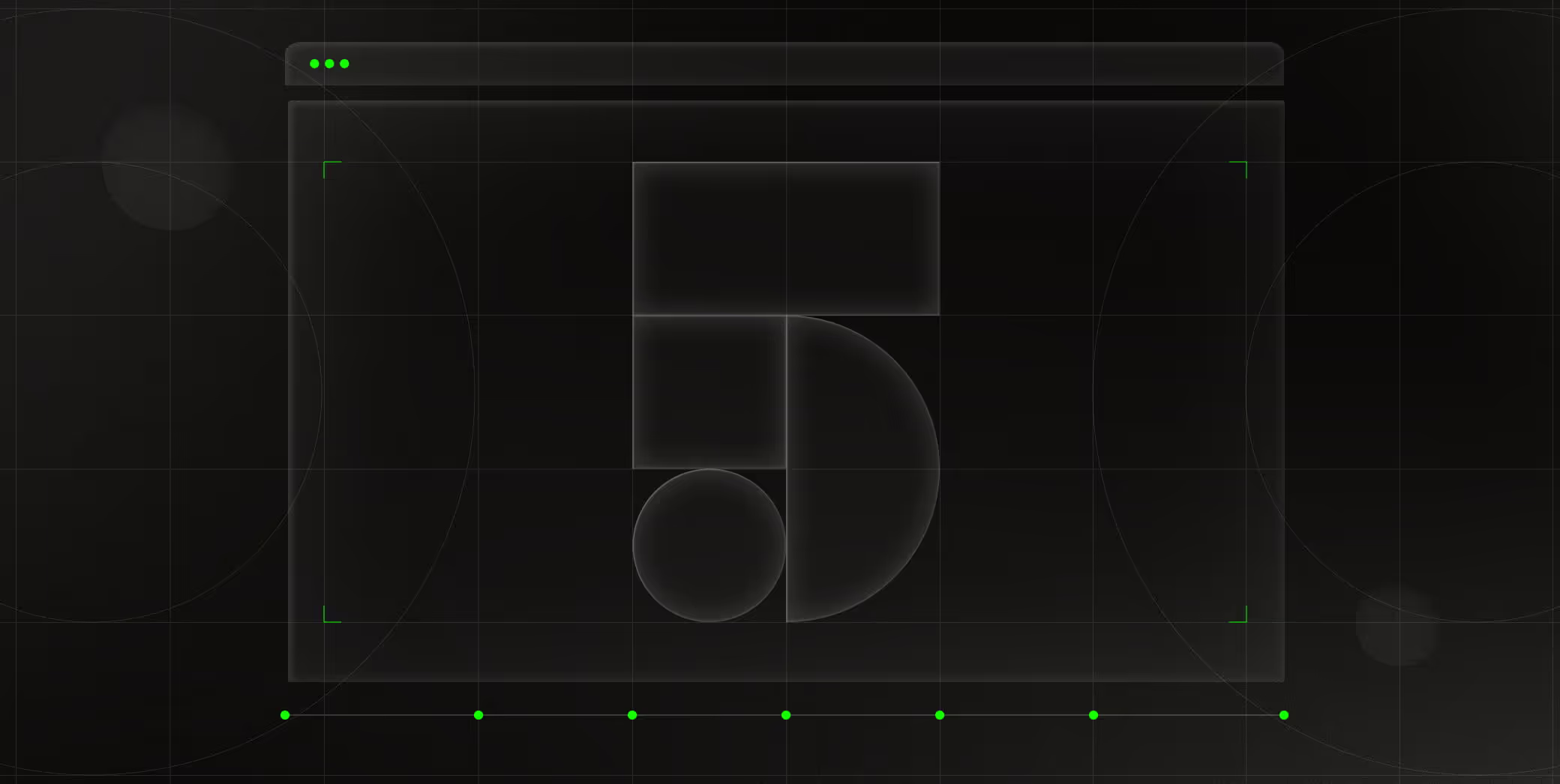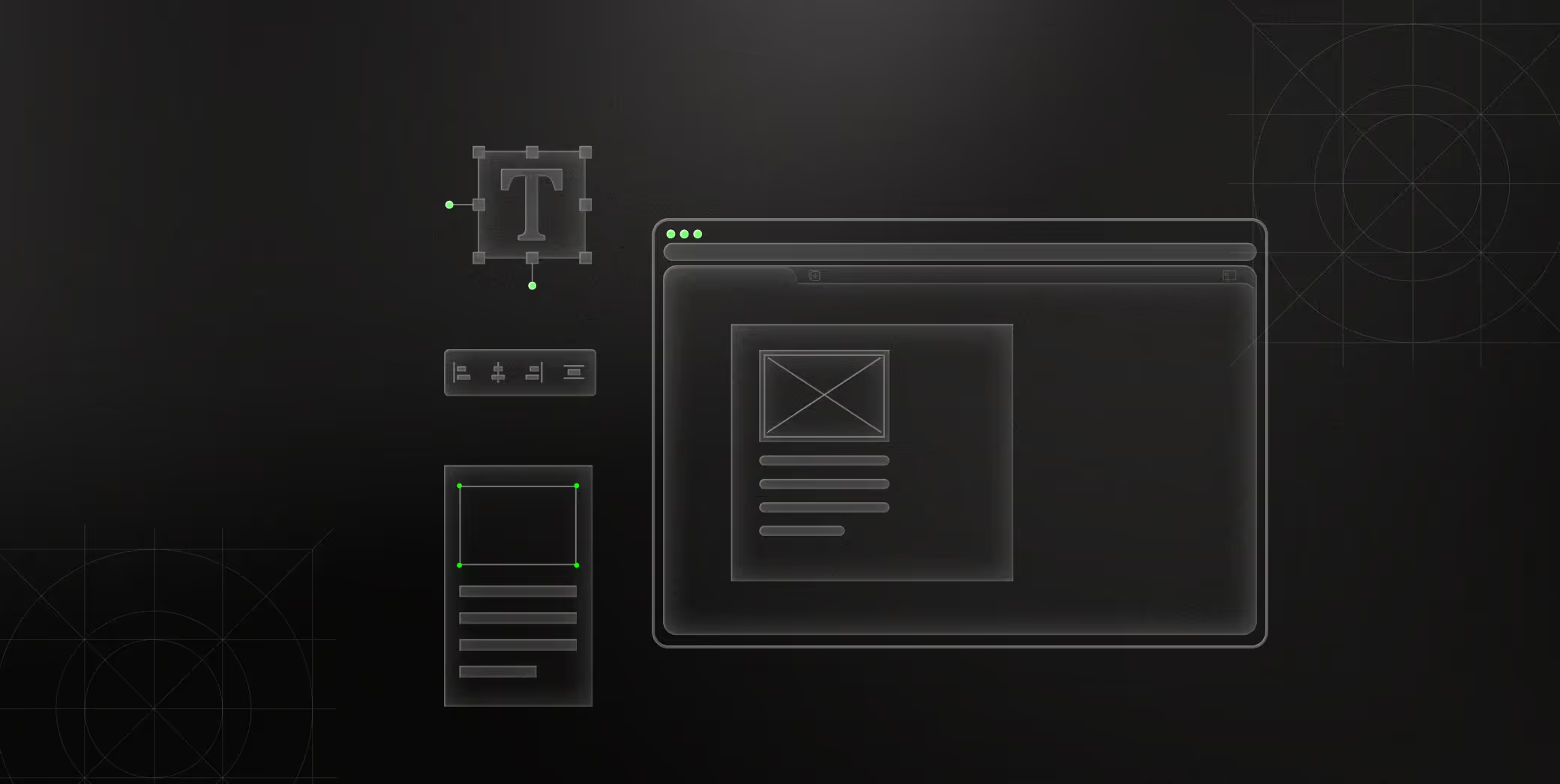The importance of a (good) creative process in web design
Written by
Apogeo crew
Published on
%2520creative%2520process%2520in%2520web%2520design.avif)
Written by
Apogeo crew
Published on
Share
The importance of a (good) creative process in web design
In the past, web design was all about making websites look good and function properly. But times have changed, and today's web designers must also consider user experience when creating their sites. In this article, we'll be discussing the importance of a good creative process in web design, and how using AI-powered software can help you achieve it.

How does the creative process work in web design?
The creative process is at the heart of any good web design. By understanding how it works, you can create better user experiences, more engaging websites, and more effective marketing campaigns.
Here are four steps that are essential to a good creative process: ideation, research, planning, and execution. Each of these steps plays an important role in creating successful web designs.
Ideation
First and foremost, the idea for a web design must be strong. You need to have a clear vision for what you want your website to look like and do, and then you need to find a way to express that concept in a way that is both visually appealing and informative. This process usually starts with brainstorming – a group discussion in which everyone comes up with as many ideas as possible for the design project. From here, you can narrow down the ideas to those that will most effectively communicate your message.
Research
Once you have a strong idea for the design, it's time to do some research. This involves studying different aspects of web design – from layout principles to user interface design – so that you can create a website that is both user-friendly and effective. It's also important to understand the latest trends in web design so that you can incorporate them into your project.
Planning
Once you have researched and developed your design concept, it's time to start planning. This involves creating a detailed outline and schedule for the project, as well as realistic budget estimates. You need to make sure that all of the components of your design – from graphics to content – are planned out in detail so that everything is consistent and cohesive.
Execution
Once the planning is complete, it's time to get started on the actual design. This involves creating high-quality graphics and templates, writing unique content, and measuring user feedback throughout the process. It's also important to keep a close eye on deadlines so that you can complete your project on time and without any major errors.

The web design process
The importance of a (good) creative process in web design can't be overstated. A well-executed creative process is key to creating successful, eye-catching websites. Without a good process in place, designers can quickly fall into ruts and find themselves repeating the same mistakes time and time again.
The web design process generally includes the following steps:
1. Planning: A good creative process begins with a good plan. Before starting on any project, it is important to have an idea of what you want to create and how you want to approach it. This means that you first need to identify your goals and objectives, then come up with a blueprint for achieving them. Once you have a good idea of the steps you need to take to reach your end result, begin work on the plan. Make sure to keep track of your progress and stay on track by using checkpoints and baselines. Without a good plan, you run the risk of wasting time and money on unnecessary revisions and surprises.
2. Research: The second key ingredient in a good web design process is research. If you want to create a website that looks great and functions well, you need to have a good understanding of the latest trends and techniques. Make sure to do your research before starting any project — it will help you avoid costly mistakes down the road. Also, be sure to check out some of the resources listed below for more information on some of the most important aspects of web design.
3. Wireframing: This step involves creating a basic layout of your website using wireframes. Wireframes are essentially blueprints that help you to map out the structure and content of your pages. This allows you to more accurately estimate the time and resources needed to finish the website. Wireframing also helps you clarify your ideas and make sure that your website will work as you intended it to. By visualizing your website in advance, you can avoid problems down the road.
4.Design: The next step is to start designing your website. This includes choosing a color scheme, typography, and other visual elements. This will ensurer that all the elements of a website are properly thought out and coordinated. This leads to a coherent and cohesive design, which is key for improving user experience. Poorly designed websites can frustrate users and even drive them away from your site. So make sure you invest in a good creative process, and you'll be sure to produce great websites!
5. Development: Once the design is complete, it’s time to start developing your website. This step involves coding the front-end and back-end of your site, as well as setting up hosting and a domain name.
6. Testing: Before launch, it’s important to test your website to ensure that everything is working properly. This includes testing for compatibility across different browsers and devices, as well as running usability tests.
7. Launch: Once everything has been tested and is working properly, you can launch your website to the public.
The web design process is important because it helps ensure that your website is effective and engaging for your users. By taking the time to plan and design your website, you can create a user experience that is tailored to your specific audience and goals. Additionally, a well-designed website can help you stand out from your competitors and attract more visitors to your site.
Does this seem like a bit too much? Check out our top 5 AI tools that helps us improve our workflow to focus on tasks that really matter. From tools that help you generate sitemaps and wireframes to image AI quality software that improves and upscales assets.
The importance of wireframing
There is no doubt that wireframing is an important part of the web design process. It can help you to understand the customer experience, to establish what features will be required and to test the design against user feedback. Wireframing can also be a valuable tool for architects and developers when creating the structure, layout and look and feel of a website.
There are a number of different types of wireframes, but the most common is the high-fidelity wireframe. This is a rough sketch that aims to capture the look and feel of the final website, rather than just its functionality. It can be used to test different design concepts and to get feedback from users. You can use a tool such as Figma or Axure, or you can draw your wireframes on paper. The important thing is that you get the process down before you start designing the actual website.
The benefits of wireframing include:
- improved understanding of the customer experience
- better planning and design of features
- faster development time
- easier testing against user feedback
Overall, a well-rounded web design process includes lots of different elements, and taking the time to wireframe and test your ideas is one crucial step.
User experience
The importance of a (good) creative process in web design is paramount. It is the foundation of any user experience and should be taken into consideration from the very beginning of a project. By following a well-structured creative process, you can ensure that your users have an enjoyable experience while using your website or app. In addition to creating an enjoyable experience, a good creative process can also help to streamline your design process and improve the overall quality of your work.
User experience is key in any web design project. If the end-users have a positive experience using your website, they are more likely to return and recommend your work to their friends and colleagues. That's why it's so important to have a good creative process in place from start to finish. Apogeo studio offers a variety of services that can help you create an effective user experience. From user research to prototyping, we can help make sure that your website is easy to use and looks great on all devices.
Contact us today to get started!
The Disadvantages of a Non-Creative Process in Web Design
When it comes to web design, creativity is key. Unfortunately, many designers rely on processes that don't allow for creativity to play a role in their work. This can lead to subpar designs that are not in line with the client's needs or vision. In this article, we'll discuss the disadvantages of a non-creative process in web design and offer some tips on how to overcome them.
A non-creative process limits the designer's options.
Without creativity at play, a non-creative process becomes limited in its possibilities. For example, if you're using a template based approach, you're limited in what you can do with the design. You might be able to replicate the layout and colors, but there's nothing stopping you from using a different font or adding A/B testing to see which variation is more popular. This type of approach doesn't allow for much control or variation, which can come across as unprofessional or outdated.
A non-creative process can lead to bland designs.
If you're not allowed to use your own creativity, you might be tempted to stick with stock templates or images. This can result in designs that are too similar and lack variety
Testing
Testing is an important part of any web design process. It helps ensure that the design is correct and meets the needs of the users. It also allows you to improve the design over time based on feedback from users. Testing can be done manually or with a tool. Manual testing involves checking the design against how it will be used. This includes checking for typos, broken links, and other errors. It can also be used to check for user interface issues such as incorrect input fields and buttons.
Software testing is done using tools such as software development life cycle (SDLC) tools or test management systems. This is done to test the entire design, not just individual parts. It can also include tests for coding accuracy, performance, and usability.
How to Achieve a Good Creative Process in Web Design
There is no one right way to approach creating web design, but there are some principles that all designers should adhere to in order to produce effective and consistent work. One of the most important components of any creative process is the creation of a good working environment for yourself. This means setting aside time each day to work on your projects, establishing clear and concise goals, and focusing on the task at hand. By following these tips, you can achieve a high-quality creative outcome regardless of the project you’re working on.
Set Clear Goals
If you don’t have specific goals in mind when starting a project, it becomes difficult to stay focused and produce quality work. By setting specific goals for each step of the process, you can ensure that each element of your design meets your expectations. For example, if you’re designing a website, make sure to specify which features you want to include and what layout design you prefer. This will help you stay organized and move forward without feeling overwhelmed by the task at hand.
Create an Effective Work Environment
An effective working environment includes plenty of space for creativity and peace of mind. By creating an area where you can be uninterrupted, you can focus on your work without distractions. You can also work in comfortable surroundings that promote creativity, such as a comfortable chair, bright light, and fresh air.
Keep a Journal
Another important technique for improving your creative process is keeping a journal. By writing down your thoughts and ideas as they occur, you can better organize and focus on your work. This will help you to develop new concepts and improve upon existing designs. By keeping a journal, you’ll also become more aware of your own creative tendencies and be able to better reflect them in your work.
Search for Inspiration
Sometimes we all need a little push to let our creativity run. Here you can check our work and projects ranging from world class athletes to corporations.
Conclusion
Creativity is at the heart of what we do as web designers. It's what inspires us to create beautiful, engaging websites that help people connect with each other and learn about new things. But creativity isn't just for fun — it's also essential for our work. Great design is all about solving problems, and a good creative process helps us do that by breaking down a problem into its component parts and then coming up with solutions for each one. If you're not taking the time to develop a good creative process, you're likely not producing the best designs possible. So be sure to give your creativity the attention it deserves—it will definitely pay off in terms of success on the web!
Elevate Your Brand with Apogeo Studio
Ready to take your brand to where it belongs? Partner with Apogeo Studio, where innovation meets creativity. Dive into our services from Brand Identity to Webflow Development and Automation. Apogeo Studio is your collaborator in creating a brand that truly stands out. Let's start the journey to elevate your brand to its apogee. Your future as an industry leader awaits.
Related Posts
Take a look at these






